Camouflage and Markings of the Bristol Beaufighter
A reprint from my editorial archives is this camouflage feature by Mr Rick Kent, originally posted at the pages of IPMS Stockholm – Ed.
Britain's lack of long-range heavy fighters at the outbreak of the war was undoubtedly a source of embarrassment to the RAF. Single-engined interceptors such as the Hurricane and Spitfire lacked the endurance for effective standing patrols, and it was soon discovered that the heavy long-range fighter would be invaluable to perform a wide variety of tasks.
The result was a piece of true British improvisation - initiated as a a private venture of Bristol company, the Beaufighter entered service only a year after the outbreak of hositilities, at a time when it was most sorely needed. Direct derivative of Bristol's earlier types Blenheim and Beaufort, the Beaufighter had two promising qualities which the the Blenheim lacked - speed and firepower.
When the last Beaufighter left the Bristol Aeroplane Company's Weston-super-Mare works in September 1945, a total of 5562 aircraft of this type had been produced in the United Kingdom. Of these some 1063 were Mark Vls and 2231 were Mark Xs. During its operational career the Beau had played a prime role in defeating the Luftwaffe's night blitz of 1940-1941, and it had operated in every major campaign of the war, carrying out the last operational sortie of the European war, a strike against German shipping in the Skagerrak, and serving with distinction in the Pacific until the capitulation of Japan.
The Beaufighter may have been the product of improvisation but it was a remarkably successful one!
The following profiles illustrate some important moments of the Beaufighter's operational career.
25 Sqn were the first RAF front-line unit to get the Beau, in September 1940, replacing Blenheim IF's in the (night) fighter role, though these early aircraft didn't have any radar. They were, as you can see, painted in the standard day fighter finish of the time - the all black night fighter colour scheme wasn't introduced until December 1940. Also they had the spinners fitted on the propellers, as did all early Beaus - but these were often removed later on. My advice to any modeller making a particular Beau Mk. I would be to work from a photograph of the actual aircraft concerned whenever possible. Some Mk. I's were even fitted with the dihedral tailplanes later in life.
The overall matt black finish was introduced for night fighters in December 1940. This aircraft is still retaining the underwing markings and also Medium Sea Grey code letters and serial number (these were later changed to dull red). This aircraft is equipped with the early "bow & arrow" type of radar - you can see the receiving aerials on the wing leading edge, the transmitting aerials are on the nose hidden behind the engine. 604 Sqn received its first Beau in September 1940 but re-equipment from the Blenheim IF was quite slow. However in 1941 it soon became the top-scoring night fighter squadron in the RAF - one of its pilots was the famous John "Cat's Eyes" Cunningham.
This Beaufighter carries an interesting colour scheme - I think you would agree. This aircraft has obviously suffered severe damage to the tail and rear fuselage, which have been replaced from another - hence the different camouflage undersides and non-standard serial number (6 inches high as opposed to the regulation 8 inches, and also the gap between the prefix letter "T" and the rest of the number).
Many RAF a/c in North Africa, although repainted in the desert colours on top, retained the original sky colouring on the undersurfaces, and did not have the azure blue as officially specified - hence this one has had a rear section from a blue one put on to it but the main part remains in sky.
252 Sqn were the first Coastal Command unit to get the Beau in the UK in December 1940 and at that time had the code letters "PN". They were transferred to Egypt via Malta in May 1941 to operate in the ground attack role and also anti-shipping in the Mediterranean. When first in Egypt they retained the PN letters, but these were deleted for a time, then replaced with "BT", which in turn was also fairly soon deleted.
The main differences between the Mk IF ("F" for Fighter) and Mk IC ("C" for Coastal) were that the C's had the additional six .303 machine guns in the wings - two in the port, four in the starboard wing - and increased internal fuel tanks. Or to put it the other way round, the fighter versions only had the four 20mm cannon in the nose - the wing space being occupied by radar equipment.
This Beaufighter is probably the most famous of them all. On 12th June, 1942, crewed by Flight Lieutenant A.K. Gatward (Pilot) & Sergeant G. Fern (Observer), this aircraft dropped a French Tricolore on the Arc de Triomphe, Paris, and then strafed the nearby Headquarters of the Kriegsmarine.
As you can see, by this time the spinners had been removed from the propellers, and the Direction Finding (D/F) Loop added behind the cockpit.
Also the standard Coastal Command camouflage of Extra Dark Sea Grey, Dark Slate Grey and Sky had been introduced - but still with roundels underwing and very pale grey code letters. There is a well-known photo of this aircraft, showing it at least one month later as it has the Type C1 (narrow white & yellow) roundels and narrow white fin flash stripe; but the original type A1 (equal width circles) were not replaced until July 1942 - hence my drawing shows the earlier type.
Flt Lt Gatward went on to command a whole Beau Coastal Strike Wing later in the war with the Mk.X (and also, of course, higher in rank).
A Merlin-engined Mk.IIF night fighter, which shows the later form of all-black finish with dull red code letters and serial number, and also the early interception radar. Also it's an Australian Squadron, based in Valley, Anglesey in Wales.
The Beaufighter always had something of a problem with "swing" on take-off due to the twin-engine power with both props rotating in the same direction - the Merlin-engined version was even more powerful than the Hercules-powered aircraft and hence was somewhat disliked by its pilots.
456 Sqn began re-equipment from Defiants in September 1941 and used the Mk.IIF until January 1943, having started to replace them with Mk.VIF in July 1942. They were based at Valley throughout their time with the Mk.II
The above 256 Sqn Mk. VIF nightfighter shows the standard colour scheme introduced in October/November 1942 - overall Medium Sea Grey with Dark Green camouflaging on the upper surfaces, and dull red code letters with black serial numbers.
This aircraft still has the early type radar (receiving aerials under and over the wing) but with the dihedral tailplane - early Mk VI's still had the flat type. The housing on top of the fuselage just behind the cockpit is the camera-gun.
In case you wonder, the small pipe that comes out of the lower fuselage below the observer's position is the fuel-dump pipe.
Another Mk VIF night fighter but with the centimetric radar in the "Thimble Nose" radome, and also based in Italy rather than the UK. Note that the aerials on the wing leading edge are no longer applicable, but the sloping ones on the right wing were still there.
255 Sqn originally received Beau Mk IIF (Merlin-engined and all black finish) in July 1941 as replacements for the Defiant and some Hurricanes in the UK. They moved to North Africa (Maison Blanche) in November 1942, and on to Sicily in August 1943 - after that they were based on the Italian mainland until September 1945, having re-equipped with Mosquito night fighters from January 1945. The Sqn was disbanded on 30th April 1946 at Gianaclis, Egypt, and has never been reformed since
The 12th USAAF in the Mediterranean Theatre had several squadrons of Beau night fighters - I think Ken Rust in his book on the 12th says four in total. These aircraft were supplied on reverse lend-lease from Britain. They were not organised into any Group, but operated on an independent Squadron basis. As you can see they retained the standard RAF night fighter scheme but with US markings
This Beaufighter T.F. Mk. X of 455 Sqn has the standard Coastal Command camouflage plus the obvious D-Day stripes. Coastal Command changed code letters for the Squadrons a number of times during the war, for a time not using any at all. This particular one illustrates the very confusing number system that was used for a time. Each Squadron on a particular base was identified by a number, starting from 1 - but this, of course, meant that different Squadrons from different bases would have the same numeral identity. So in this case the "2" identifies 455 Sqn and the "X" is the individual aircraft designation within the Sqn. The other thing that modellers should be aware of is that the Squadrons in the Coastal Strike Wings were trained on particular weapons - so those that carried torpedoes would not also have the rockets or bombs! 455 operated with both bombs and rockets, but not both on the same aircraft at the same time, the ballistic characteristics of the two weapons being quite different.
Another Mk.X, but armed with the 60 pound rocket projectiles, and also of a South African Squadron based in Italy. The camouflage finish is of the later style of overall Extra Dark Sea Grey upper over Sky under. Like all the "Strike" Beaus in the Mediterranean Theatre by this time, Squadron identity codes had been dropped, so the aircraft carries only the individual identity letter "Z". Note also the red propeller hubs - a standard marking on all Allied (not just British but US, French and Italian Co-belligerent) fighters in the MTO.
16 Squadron SAAF first received Beaufighter X's in December 1943, replacing the Beauforts they previously operated, and kept them until June 1945. They operated in the anti-shipping role over the Aegean Sea and later over the Adriatic, also attacking German ground targets in Yugoslavia in support of the partisans there. Such a pity that it looks as though RAF aircraft of today will be attacking Yugoslav targets for quite different reasons...
An Australian Beaufighter, but still a Mk.X built in the UK - later on Beaus were also built in Australia and designated Mk. 21. This pariticular aircraft serverd with No. 30 Squadron RAAF in New Guinea.
The camouflage colours used are not the same as the RAF shades - the Australian paints being Foliage Green, Earth Brown and Sky Blue. Also the blue in the Australian roundels is not the same as the RAF shade, but somewhat lighter. Here again the modeller should be careful about any particular aeroplane - some were left in their original RAF camouflage colours.
I would highly recommend for all Australian WW II aircraft colours in the Far East the book Aviation History Colouring Book by Ian K. Baker, published by the author in 1995, ISSN 1322-0217, which includes actual colour samples of the Australian paints, plus a lot of information.
This Beaufighter Mk. 21 is one of the Australian-built ones, painted foliage green overall, but the shade used on those Beaus was very dark as you can see.
A number of publications have stated that Sanga-Sanga was in the Philippines, but RAAF aircraft did not follow the US forces there, turning west to liberate the Dutch East Indies as they then were - any good atlas will show you that Sanga-Sanga is in fact in north-east Borneo.
This aircraft also shows the tropical type filters fitted over the engines, also used in the Mediterranean area, but this is one more point of caution about the Beau - some had them, some didn't, so it's really a case of working from photographic evidence to be certain with any particular machine.
This aircraft is a Coastal Command "Torbeau" of a New Zealand Squadron. A few things to notice are the "Thimble" nose type radome covering tha ASV or Air-to-Surface Vessel radar, the reintroduction of the spinners on late production Mk X's, whip type radio aerial behind the cockpit, and the added small aerial on the fuselage underside. This was also seen on a lot of Spitfires - I think it was probably some kind of radio navigation aid.
The four-character code sequence is "P6" for 489 Sqn, the "F" being the individual aircraft letter and the "1" after that indicating C Flight of the Squadron - in other words the unit had more than 24 aircraft total, so C Flt had the numeral 1 added.
The fins on the back of the torpedo were made of plywood and unpainted, their purpose being to ensure that the torpedo entered the water at the correct angle; on hitting the water they simply broke off, leaving the torp to continue as normal to its target.
The above machine illustrates the markings used by the RAF later in the war in India/Burma - namely Dark Earth / Dark Green uppers with Medium Sea Grey under, with grey codes and white identification bands, and also the two shades of blue for the national markings. This colour scheme did not apply to night fighters, which retained the standard NF finish, but with the blue markings.
The rocket projectiles (RP) were always painted dark green on all aircraft types, as were all British "live" bombs too. The coloured bands round the warheads indicated the filling - in this instance yellow for high explosive.
The last of the selection - a post-war one, so some differences. Note the later style of RP launchers - the rockets were mounted in two pairs of two, one above the other - i.e. there's another pair behind the ones you can see in this profile.
The metal mounting plate underwing for the rails remains in the original sky finish, but the rest of some of these last operational Beaus of 45 Squadron, used against the terrorist uprising in Malaya, was in post-war style camo and markings: Dark Green / Dark Sea Grey uppers, with PRU Blue unders. This was for some time the standard RAF scheme for aircraft based overseas.
Note also the post-war shades of blue and red in the markings, and also roundels & serial numbers under the wings. 45 were the last front-line RAF Beaufighter Squadron, keeping them until February 1950, re-equipping with Bristol Brigands from November 1949.
Rick Kent is a modeller, IPMS:er and a productive aviation artist. His speciality are computer-generated aircraft profiles.
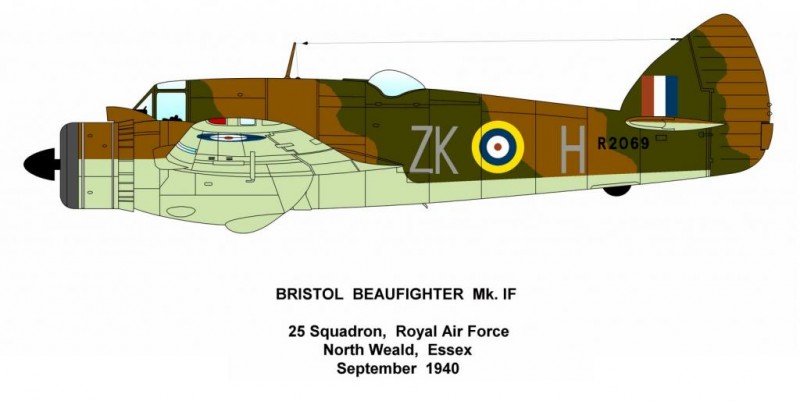
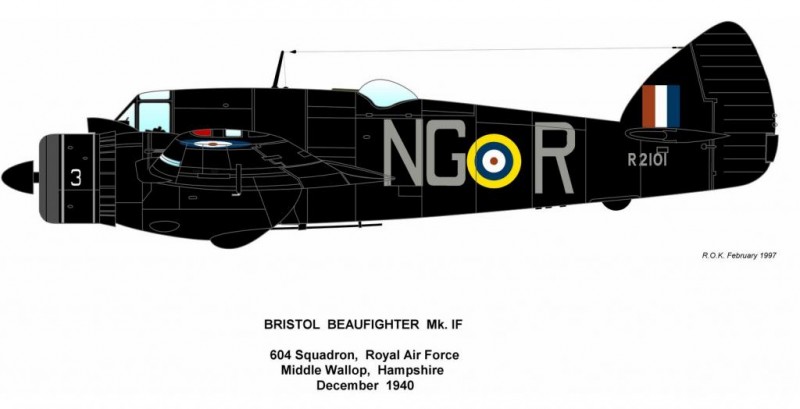
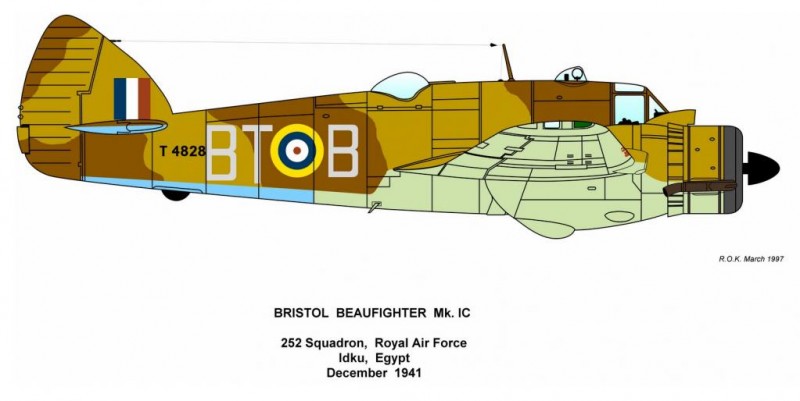
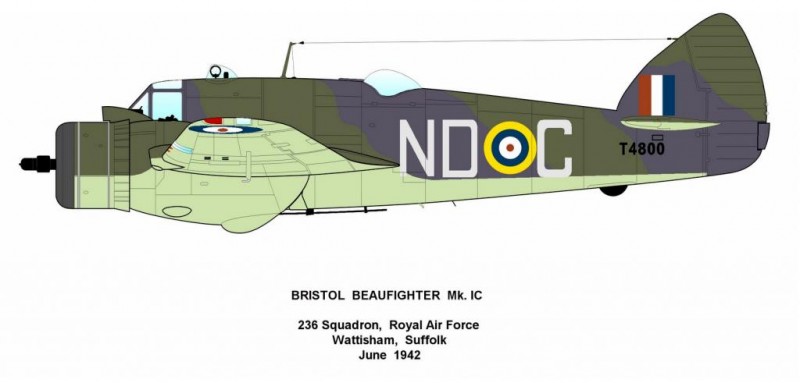
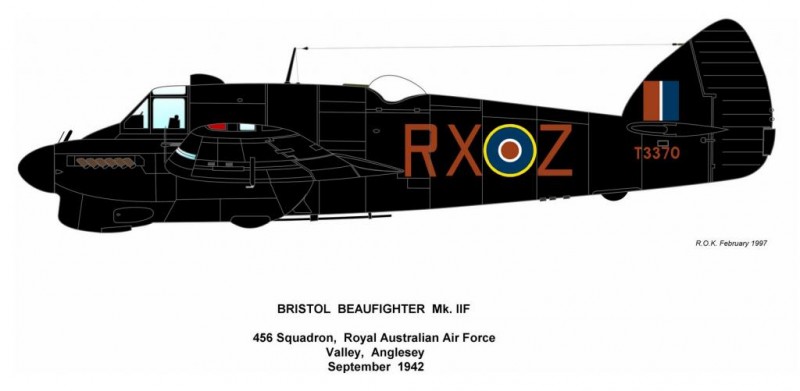
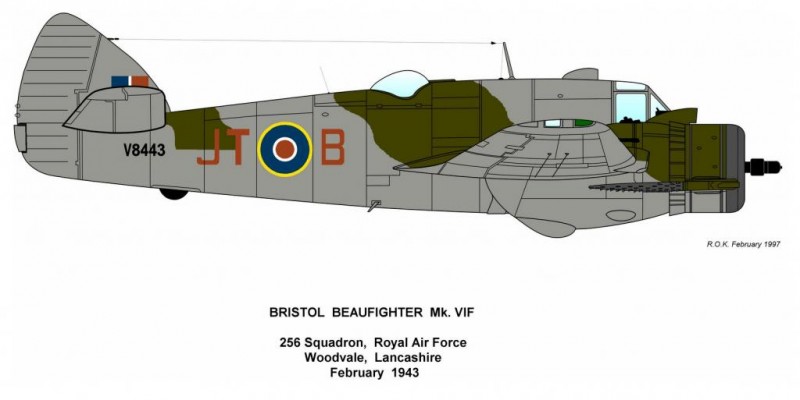
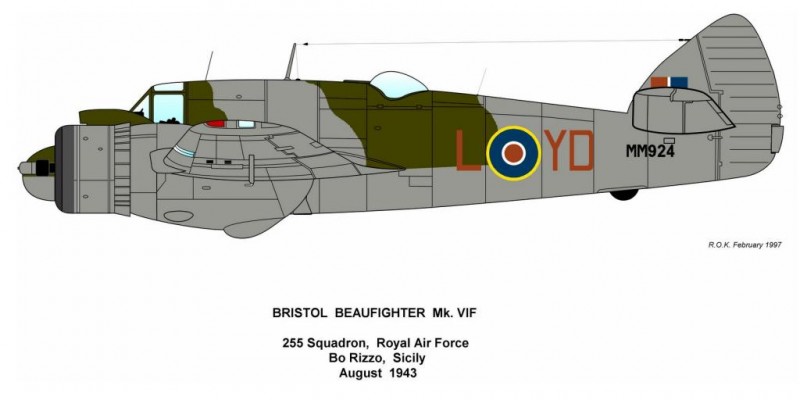
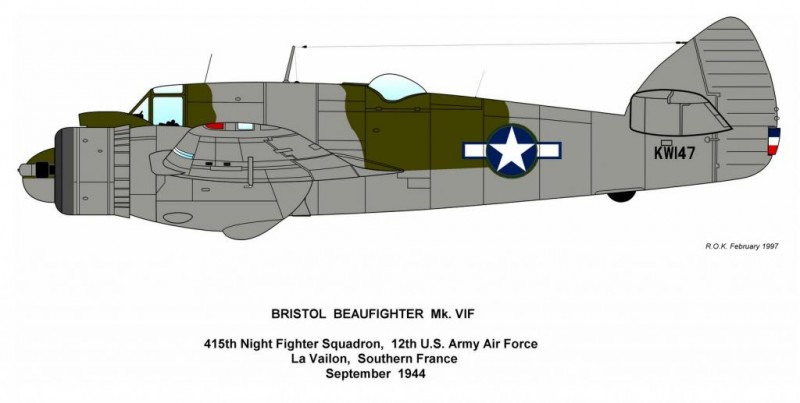
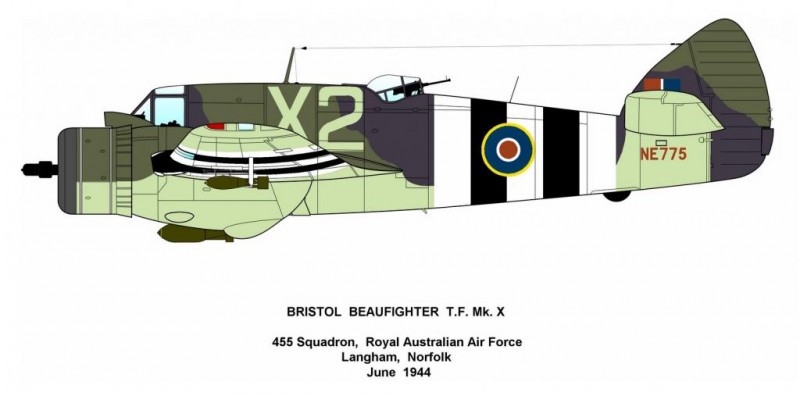
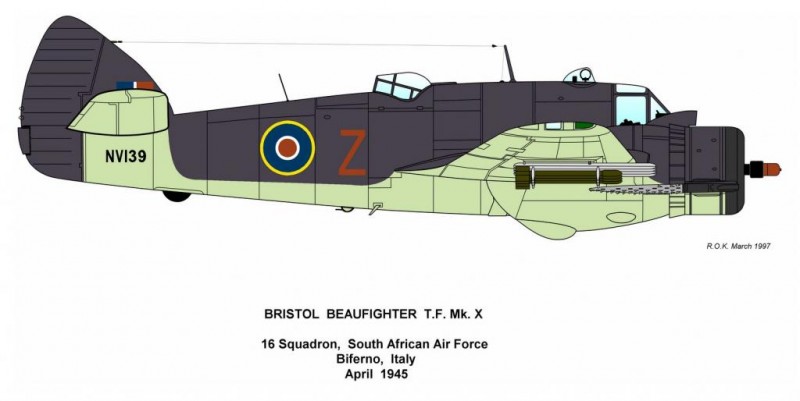
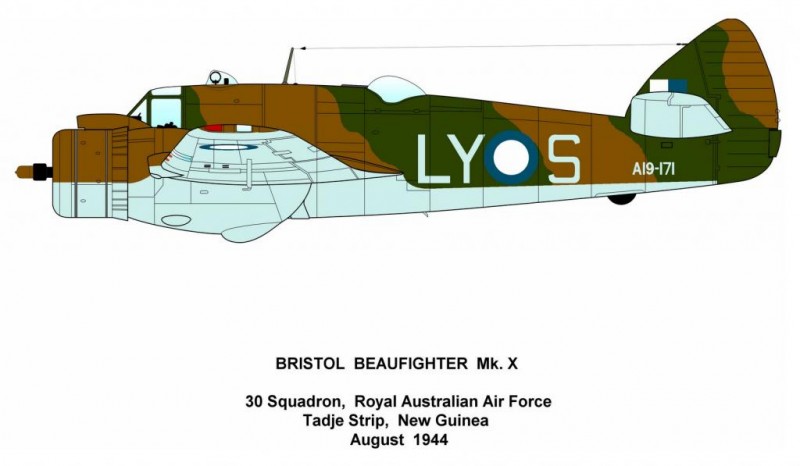
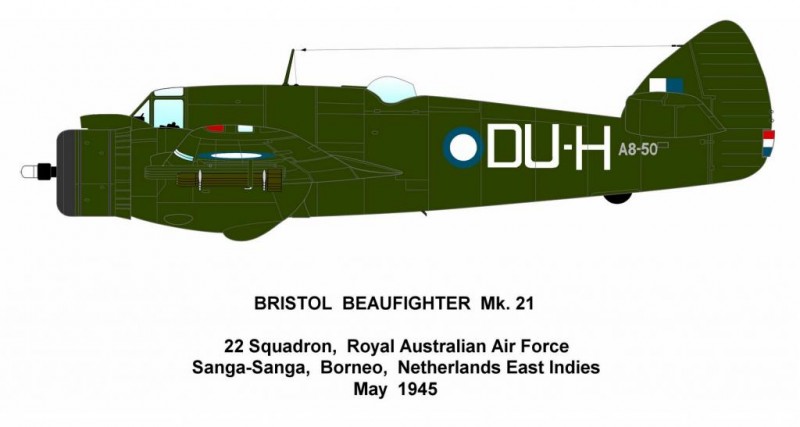
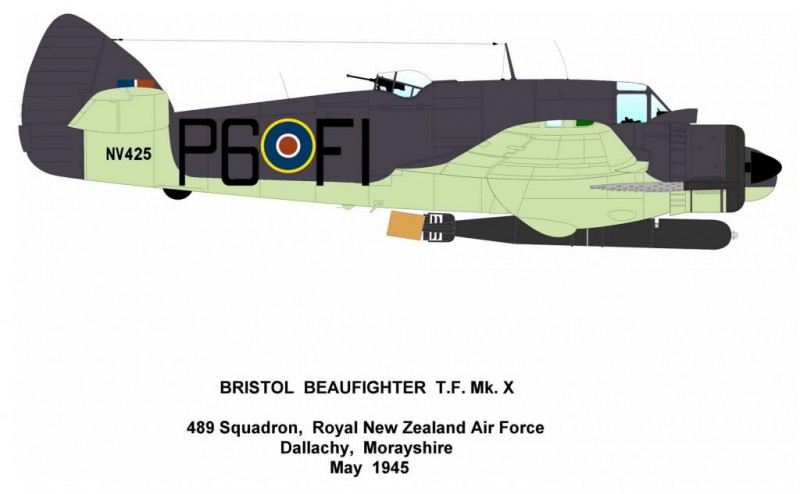
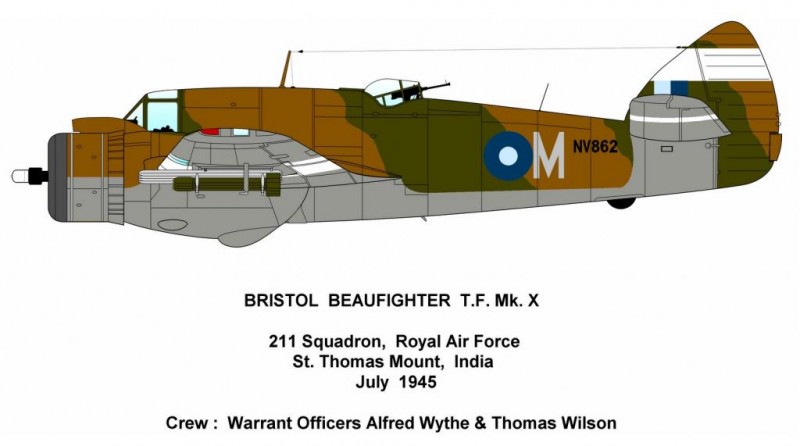
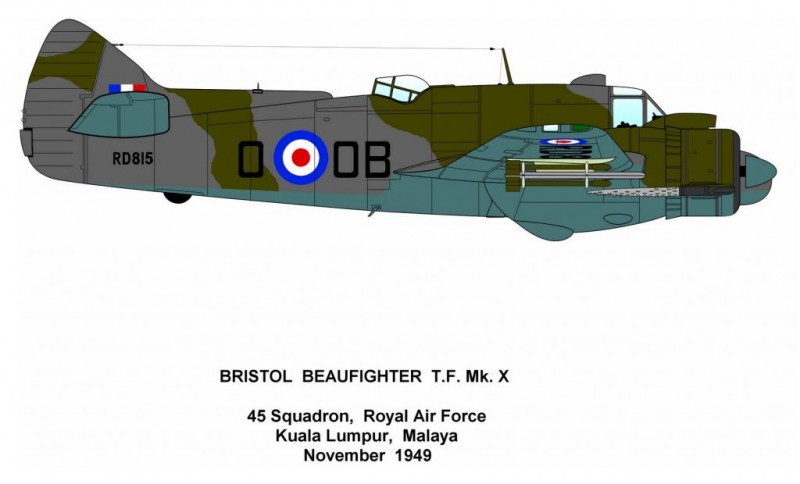
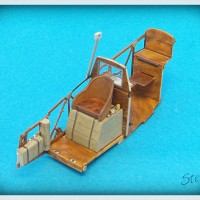
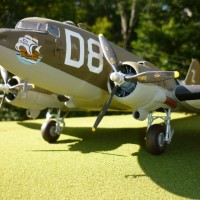
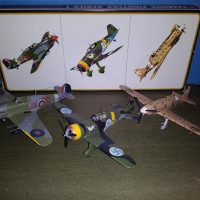
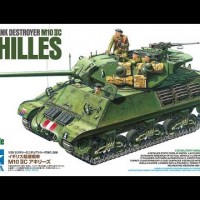
Thanks for sharing, the 'Beau' was always one of my favorites, (although the 'thimble nose' variants get a bit ugly).
First profile ( or a similar one with the same color scheme) already added to my bucket list. I will have to find the way of longevity due to my list length 🙂
Thanks for sharing
i 'd like to know the colour scheme of 143 squadron. my uncle died from a malfunction flying the MK1 BRISTOL BEAUFIGHTER.on 27/04/1944
The Coastal beau,s (Mk1C,V1c etc had the wing mg,s deleted for fuel tanks to add range.Mk v1C and TFX,s of 227 squadron in 1943/44 carried 100 lb bombs under the wings.I am told by former aircrew that in 1944 their beaus carried very faded dark slate grey/extra dark sea grey camo.In July '44 227 squadron became 19 squadron Saaf and added rockets- joining 16 SAAF at Biferno for attacks over Yugoslavia-my late fater flew with both squadrons.